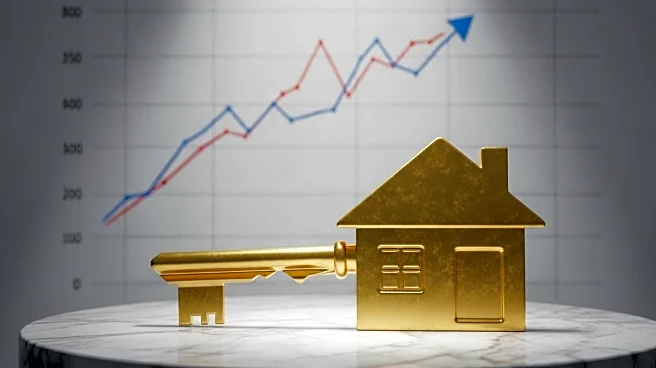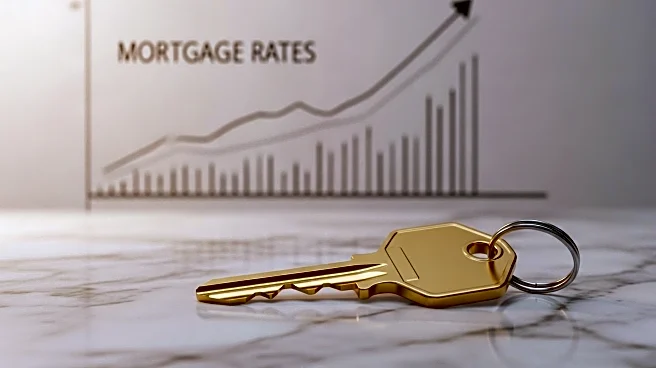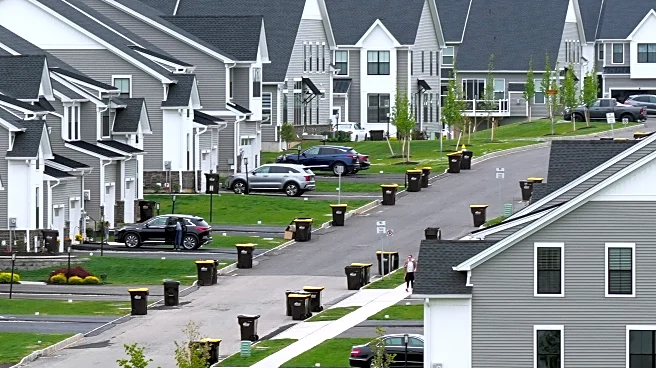What's Happening?
The average rate on a 30-year U.S. mortgage has decreased to 6.34%, marking a decline from earlier in the year when rates were nearly 7%. This reduction follows the Federal Reserve's first rate cut of 2025, which has contributed to the overall decrease in mortgage rates. For prospective homebuyers considering properties in the $800,000 range, this rate drop translates into significant monthly savings. Specifically, an $800,000 loan at the current rate would result in a monthly payment of approximately $4,972.66, compared to $5,284.86 at January's higher rate. This change represents a monthly saving of about $312, or $3,746 annually. Additionally, those opting for a 15-year fixed-rate mortgage at the current average rate of 5.64% would see monthly payments of approximately $6,596.25, offering further savings compared to earlier rates.
Why It's Important?
The decline in mortgage rates is significant for both new homebuyers and existing homeowners considering refinancing. Lower rates reduce monthly payments, making homeownership more affordable and potentially increasing demand in the housing market. For those with existing mortgages at higher rates, refinancing could offer substantial savings over the life of the loan. This environment is particularly beneficial for buyers in high-cost areas where $800,000 homes are common. The reduced rates also provide an opportunity for buyers to build equity faster and pay less in interest over time, especially with shorter-term loans. However, the decision to refinance should consider closing costs and the homeowner's long-term plans.
What's Next?
Homeowners and prospective buyers are likely to evaluate their financial situations to determine if refinancing or purchasing is advantageous under the current rate conditions. The potential for further rate changes by the Federal Reserve could influence future mortgage rates, impacting decisions in the housing market. Buyers and homeowners should consider their long-term plans and financial stability when deciding to lock in current rates or wait for potential further declines. Additionally, the broader economic conditions and Federal Reserve policies will continue to play a crucial role in shaping mortgage rate trends.











